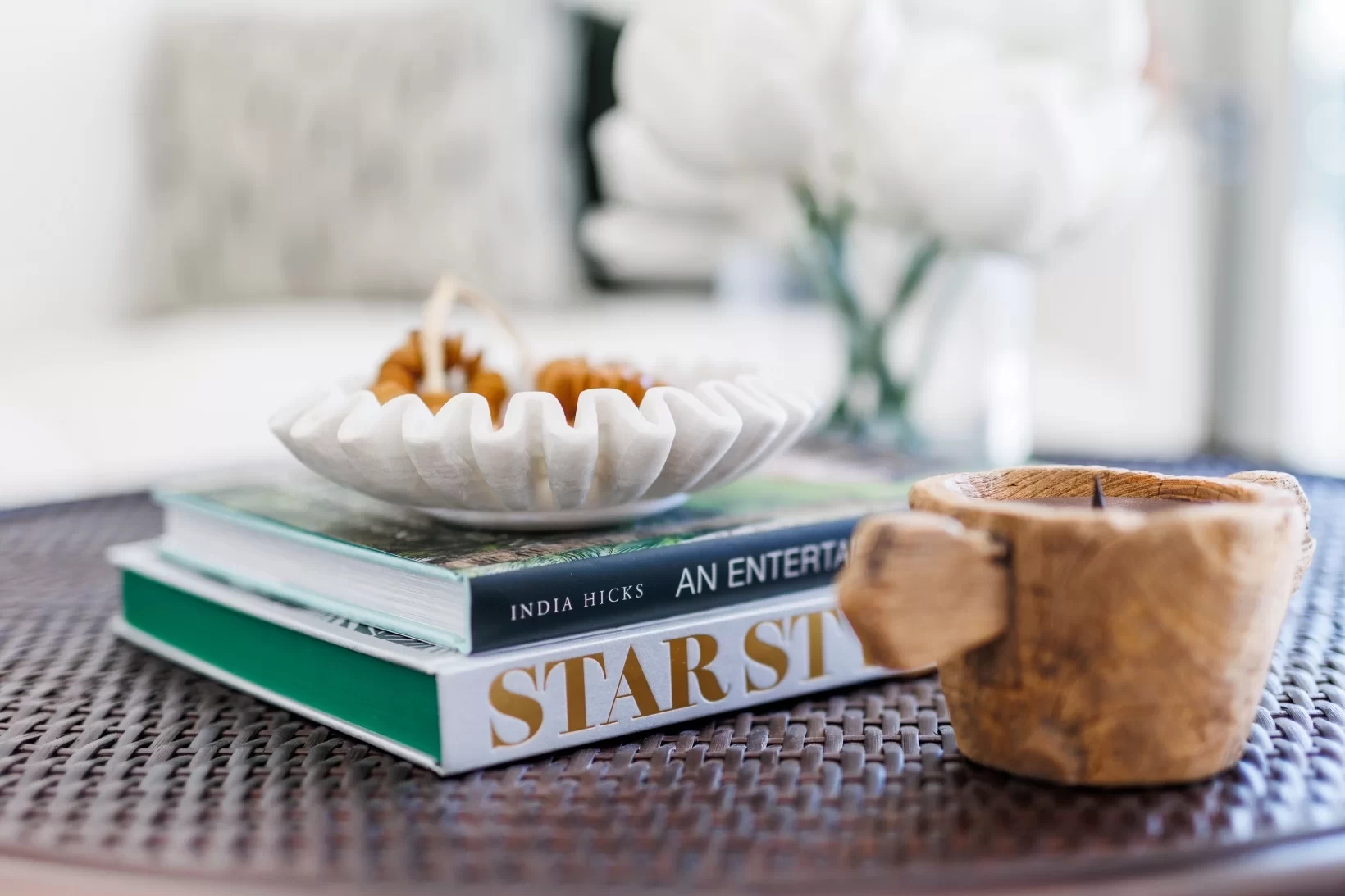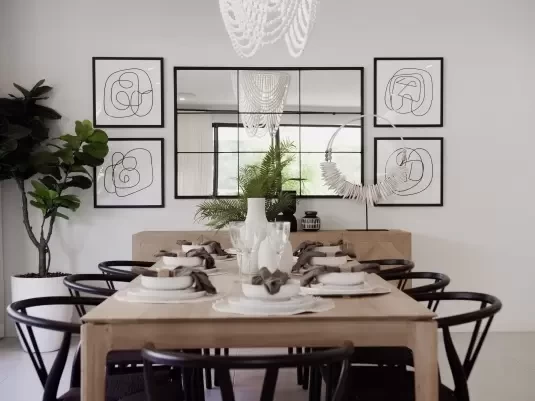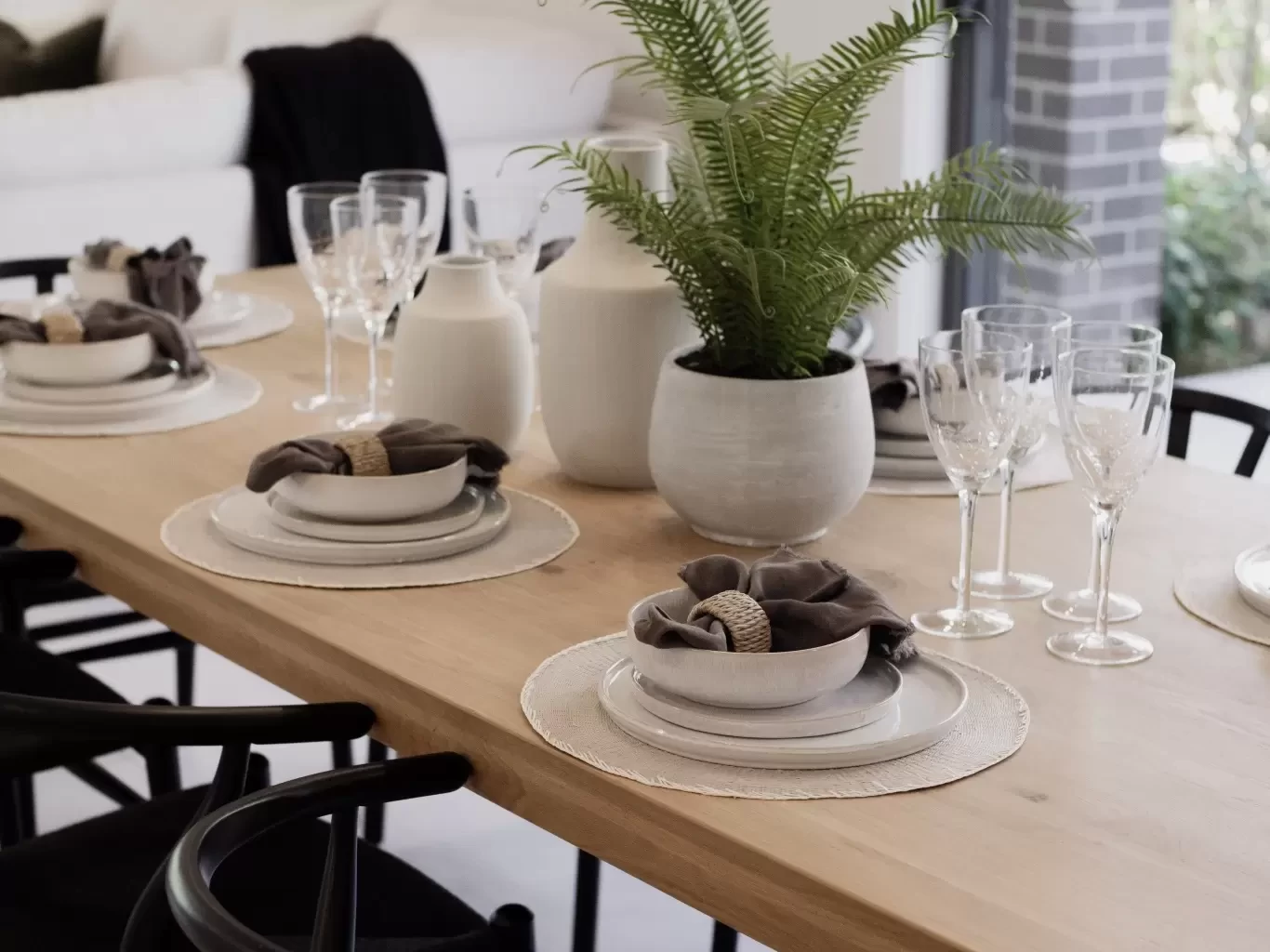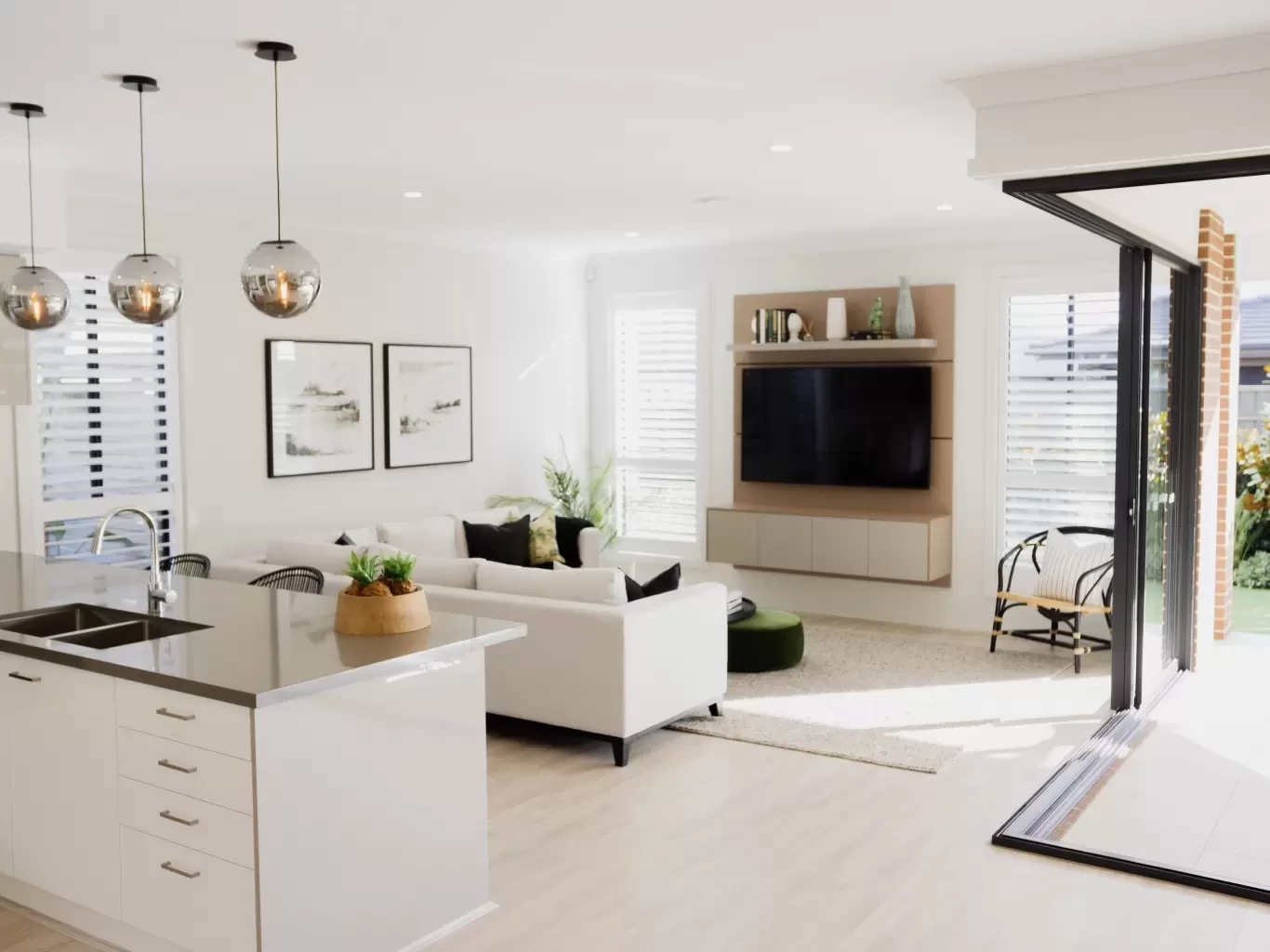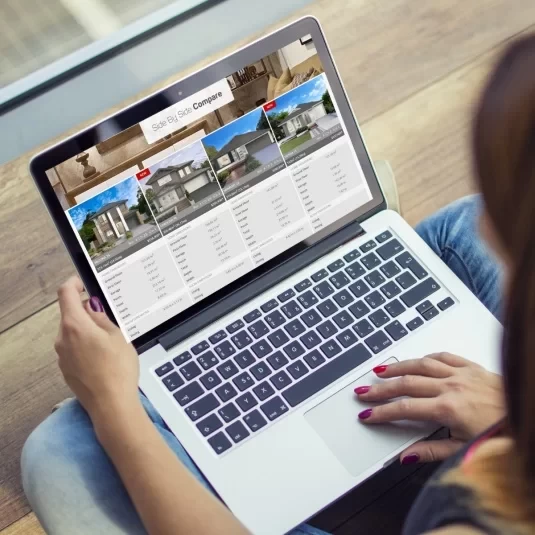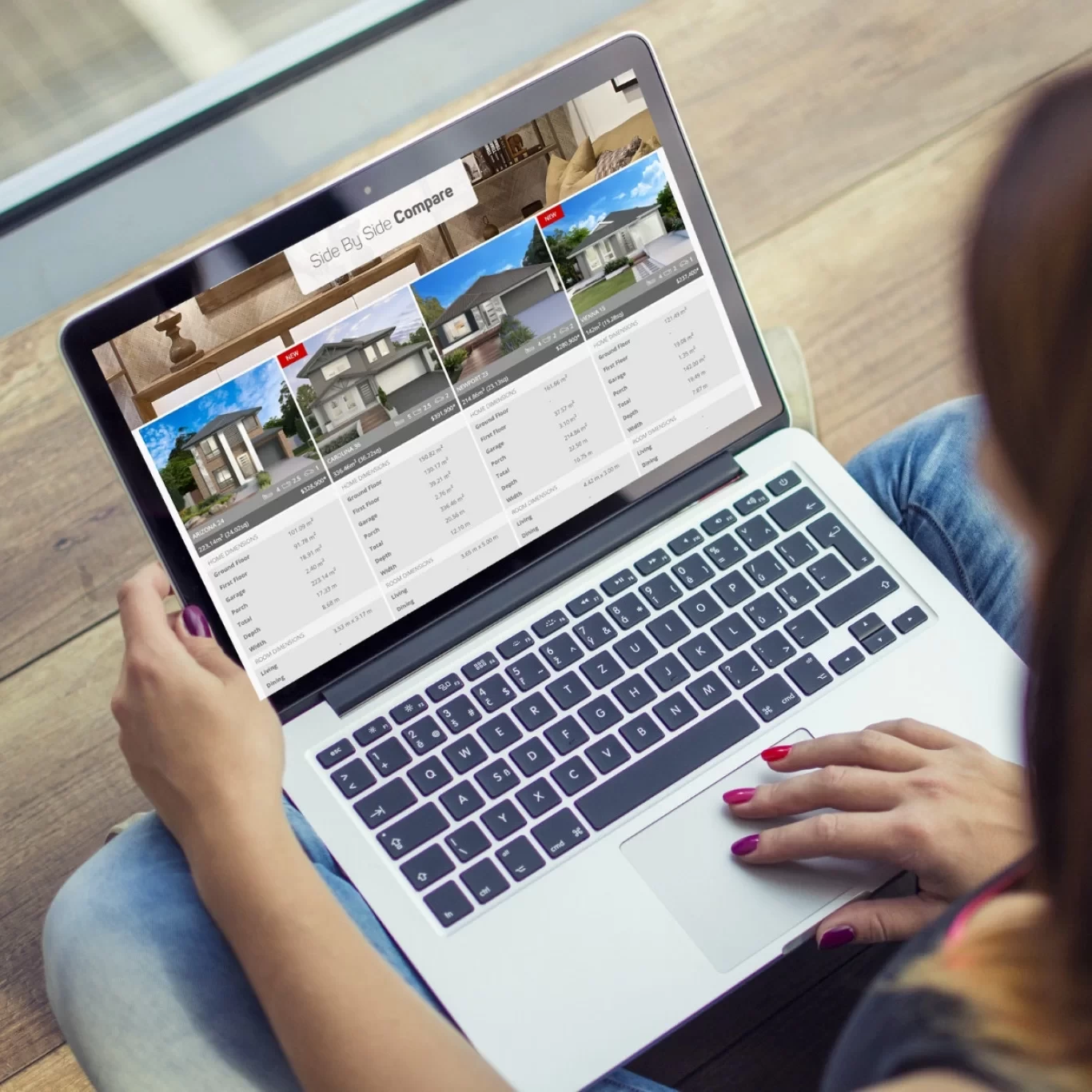The Australian coastline has absolutely inspired our design sensibilities for generations, and now it's being perfectly expressed in our homes. Hamptons style homes in Australia aren't just structures, they're transformative dialogues between our unique landscape and our deepest desires. As we're planning for 2025, this architectural conversation has evolved dramatically beyond the traditional white weatherboards and blue accents.
This trend is maximising its presence across Australia, from Perth to Sydney, homeowners are unleashing their creativity and discovering beauty in the spaces between tradition and innovation.
What if the ultimate Hamptons home isn't found in design magazines but in the strategy of balancing classic American coastal style with our distinctively Australian context?
Let's dive in, the answer lies in adaptation, not imitation.
In 2025, Australian Hamptons homes have been crafted with sustainability features without compromising luxury. They honour tradition while thoughtfully reimagining it. They're designed to feel both timeless and thoroughly modern.
Here's your expert insights guide that covers every aspect of creating a home that draws inspiration from Long Island's beaches while standing proudly on Australian soil. From architectural elements that define the style to landscaping choices that complement our climate, we've organised everything you'll need to discover how to make this beloved aesthetic truly your own.
The most successful Hampton style homes in Australia aren't copies, they're conversations. Let's unlock yours.
Achieving the Perfect Coastal Interior Design Australia
-
Understand Hamptons style in Australia: light, airy, relaxed.
-
Use a mix of soft colours and natural materials.
-
Balance comfort with elegance through textures.
Key Elements of Hamptons Style Interiors
Hamptons style perfectly captures elegance with a coastal feel. In Australia, this resonates deeply due to our comparable beach lifestyle, offering a laid-back yet sophisticated approach to interior decor. The foundation of this style features neutral colour palettes with blues, greys, and whites. By integrating these shades into your interiors, you'll create a sense of calm and openness. This palette maximises the feeling of oceanic surroundings and vast skies, transforming your interior environment into a space that feels both crisp and serene.
Natural Materials: The Hamptons style is visually refined yet firmly grounded in utilising sustainable, natural materials. Timber and stone are absolutely essential choices for flooring, furniture, and decorative pieces. These materials introduce a tactile element, contrasting beautifully with smooth wall finishes and providing depth to your space. When selecting timber, look for finishes that showcase natural grains, such as oak or ash. You know these options not only look stunning but also offer longevity and sustainability.
Textural Balance: The softness of linens, contrasted with the ruggedness of jute rugs, creates an unforgettable dynamic in your home. In a Hamptons-styled space, let's organise with linen-covered couches, oversized cushions, and throw rugs in luxurious textures. Jute rugs, with their earthy aesthetic, ground the space, adding warmth and comfort without overshadowing the elegant features of your design.
Step-by-Step: Styling Your Home
Styling your Hamptons-inspired home begins with creating the perfect blank canvas. A neutral base acts as your ultimate foundation. Walls painted in whites or light greys set the tone, allowing coastal hues to shine through your decor. Consider accents of seafoam blue, ocean grey, or sand beige in trim, furniture, and accessories to transform your space.
-
Neutral Base: Start with white or light grey as your wall colour. These shades maximise your room's sense of space and brightness without distracting from additional colours and textures. Expert insights suggest selecting shades with minimal undertones for the best results.
-
Coastal Hues: Once your neutral base is established, it's time to implement coastal colours subtly. Cushions, wall art, and decorative pieces in shades of blue or beige can introduce colour without overwhelming the balance of your room. These subdued shades maintain a sophisticated yet relaxed vibe.
-
Natural Elements: Unleash the beauty of timber through flooring or furniture pieces. Look for options with clean lines crafted from oak or birch. Incorporate stone as part of kitchen or bathroom surfaces. Adding indoor plants further enhances the natural vibe, offering vitality and life to your decor.
-
Textures: Enrich your space by layering textures. Soft rugs, plush cushions, and thick, knitted throws add comfort and invite relaxation. These textures are designed to break up any monotony, making your home feel lived-in and welcoming.
-
Lighting and Accessories: Utilise light fixtures that support the coastal theme, like those crafted from natural fibres or glass. This strategy not only adds functionality but also enhances your design's aesthetic. Accessories such as nautical-themed artwork, driftwood, or coral pieces bring a touch of sea life into your home in a tasteful way.
Understanding Hamptons Style in Australia
Australians have absolutely embraced Hamptons style, seamlessly blending it with local influences. This adaptation isn't just about replicating American designs; it's about creating the ultimate Australian experience. Australian Hamptons homes often feature open-plan layouts, promoting efficient airflow, essential given our warm climate.
Australian Version: The Australian interpretation of Hamptons style incorporates indoor-outdoor living, perfectly aligned with our outdoor-focused lifestyle. You'll discover decking areas that transition smoothly from private gardens to indoor spaces are characteristic features. Bi-fold doors, expansive verandas, and outdoor kitchens blend with interior rooms, maximising both lifestyle and function.
Popular House Design Trends: While the Hamptons style is a favourite, we've noticed Australians also admire contemporary designs, often combining these elements to create unique homes. The unforgettable appeal lies in comfort mixed with elegance, expertly crafted for the specific nuances of the Australian environment. View our full range of new home designs in Sydney and Newcastle, NSW.
How to Incorporate Modern Hamptons Architecture
-
Modern Hamptons homes blend classic coastal elegance with contemporary features
-
Focus on creating light-filled spaces with architectural details that balance tradition and innovation
-
Learn specific steps to incorporate signature elements while adding modern touches
The coastal elegance of Hamptons style continues from interiors to the architectural framework itself. Modern Hamptons architecture maintains the classic charm while incorporating contemporary elements that make these homes both beautiful and functional in the Australian context.
1. Signature Architectural Features
Creating a modern Hamptons home starts with establishing the right architectural foundation. These signature features define the style and create the framework for everything else.
Open Floor Plans: Creating Flow and Light
Open floor plans are essential in modern Hamptons architecture. They remove unnecessary walls between living spaces, kitchens, and dining areas to create a seamless flow throughout the home. This openness allows natural light to penetrate deeper into the house and maximize that sense of spaciousness.
To implement an open floor plan:
-
Remove non-load-bearing walls between commonly used spaces like kitchens and living areas
-
Utilize structural beams to support larger open spaces if needed
-
Create defined zones within the open space using strategic furniture placement and area rugs
-
Keep sightlines clear from one end of the house to another where possible
Open floor plans also perfectly support the indoor-outdoor connection that's vital in Australian homes. They make it easier to connect interior spaces to outdoor entertaining areas, which is absolutely perfect for Australia's climate.
High Ceilings and Large Windows
High ceilings are the ultimate hallmark of Hamptons architecture that create an airy, spacious feel. In modern interpretations, these ceilings are often emphasized with architectural details.
For high ceilings:
-
Aim for minimum 2.7-meter ceiling heights in main living areas
-
Consider vaulted or raked ceilings in key rooms
-
Add exposed beams for visual interest and traditional character
-
Utilize ceiling paneling such as tongue and groove or shiplap for texture
-
Learn more about standard ceiling height in Australia
Large windows are equally important and serve multiple purposes:
-
Install floor-to-ceiling windows in main living areas
-
Choose double-hung windows with white frames for a classic Hamptons look
-
Position windows to capture views and maximize natural light
-
Consider transoms above doors and windows for additional light and architectural interest
"You don't want the space to look the same 24 hours a day. And that's the beauty of the light, it's always changing," notes architect Harry Bates, highlighting the importance of how natural light interacts with Hamptons homes throughout the day.
Classic Gabled Rooflines
Gabled rooflines are perhaps the most recognisable exterior feature of Hamptons architecture. They create the distinctive silhouette associated with the style.
To implement classic gabled rooflines:
-
Design a symmetrical façade with a central or multiple gabled roofs
-
Use a roof pitch between 30-45 degrees for authentic proportions
-
Include dormer windows where appropriate to add character and unlock usable space
-
Consider a cross-gabled design for larger homes to break up the roofline
Adding white trim and fascia boards to highlight the roofline creates contrast against the exterior cladding and emphasises this architectural feature.
2. Integrating Modern Touches
While maintaining classic Hamptons elements, incorporating modern touches ensures the home is contemporary and efficient for today's lifestyle needs.
Sleek Finishes for Contemporary Appeal
Modern Hamptons homes blend traditional forms with contemporary finishes. These updates give the classic style a fresh feel while maintaining its timeless appeal.
For modern finishes:
-
Utilise matte black hardware and fixtures as contrast points against white elements
-
Incorporate sleek marble with subtle veining in kitchens and bathrooms
-
Choose engineered stone countertops for durability and modern appeal
-
Install glass balustrades for staircases and balconies to maintain openness
-
Select streamlined cabinetry with simple panel designs rather than ornate details
The transition to more contemporary finishes doesn't mean abandoning the Hamptons aesthetic, it simply updates it for modern tastes while maintaining the overall architectural integrity.
Energy-Efficient Systems and Materials
Modern Hamptons homes in Australia increasingly incorporate energy-efficient features that respond to climate concerns and rising energy costs.
According to Zillow reports, energy-efficient homes in the Hamptons market are rising in value as buyers seek long-term savings and environmental benefits. This trend has transformed the Australian market as well.
Key energy-efficient elements to include:
-
Install double or triple-glazed windows that maintain the Hamptons look while improving insulation
-
Utilise high-performance insulation in walls, floors, and ceilings
-
Incorporate passive solar design principles with proper orientation and window placement
-
Install energy-efficient HVAC systems sized appropriately for the space
-
Consider solar panels positioned discreetly on roof sections not visible from the street
-
Implement smart home technology to control and optimise energy usage
These features not only reduce environmental impact but also significantly lower operating costs over the life of the home.
Blending Traditional Forms with Modern Technology
The most successful modern Hamptons homes seamlessly integrate technology without compromising traditional aesthetics.
To achieve this perfect balance:
-
Install smart home systems that control lighting, climate, security, and entertainment
-
Hide technology behind traditional architectural elements
-
Utilise automated blinds and curtains for large windows
-
Incorporate hidden speakers and entertainment systems
-
Design dedicated spaces for home offices with built-in technology
-
Include charging stations and USB outlets in cabinetry
Smart home integration should enhance the living experience without being visually dominant. The technology should feel like a natural extension of the home rather than an afterthought.
3. Exterior Materials and Colour Palettes
The exterior of a modern Hamptons home sets the tone for the entire property. The right materials and colours create the signature look while withstanding Australian conditions.
Weatherboard and Shingles
Weatherboard cladding is the defining exterior feature of Hamptons architecture. In Australia, this can be adapted using various materials:
-
Traditional timber weatherboards for authentic appeal
-
Fibre cement weatherboards for durability and lower maintenance
-
Linea boards for a contemporary interpretation with clean lines
-
Cedar shingles for accent areas or feature walls
Installation is crucial for achieving the ultimate look:
-
Maintain consistent spacing between boards
-
Ensure horizontal lines remain perfectly level
-
Use wider boards (150-180mm) for a more traditional appearance
-
Consider shadow lines for depth and visual interest
Modern Colour Schemes
The colour palette for modern Hamptons homes has evolved while maintaining its roots in coastal influence:
-
Main exterior colours: Whites, soft greys, and muted blues
-
Trim and accents: Crisp white for window frames, fascias, and balustrades
-
Roof colours: Grey, charcoal, or navy for modern contrast
-
Door colours: Navy blue, black, or natural wood tones for front doors
For a contemporary update to the classic palette:
-
Consider charcoal or black window frames instead of traditional white
-
Use darker exterior colours balanced with white trim for a modern interpretation
-
Incorporate natural stone elements in grey or taupe tones
-
Add metal accents in black or bronze finishes
4. Indoor-Outdoor Connection
Australian lifestyle demands excellent connections between indoor and outdoor spaces, which aligns perfectly with modern Hamptons architecture.
Creating seamless transitions:
-
Install large sliding or bi-fold doors that open to outdoor entertaining areas
-
Utilise consistent flooring materials that extend from inside to outside spaces
-
Design covered outdoor areas that function as extensions of indoor rooms
-
Position kitchens to connect with outdoor dining areas
-
Create outdoor rooms with similar proportions to interior spaces
This connection is particularly important in Australia, where the climate allows for year-round outdoor living. Modern Hamptons homes often feature extensive decking, pavilions, or verandahs that extend the living space while maintaining architectural consistency.
5. Future-Proofing Your Modern Hamptons Home
A truly modern approach to Hamptons architecture includes considerations for changing needs and environmental factors.
Key strategies for future-proofing:
-
Design flexible spaces that can adapt to changing family needs
-
Include universal design principles for ageing in place
-
Install infrastructure for future technology upgrades
-
Consider climate resiliency with elevated foundations in coastal areas
-
Utilise durable, low-maintenance materials that will age gracefully
-
Design for potential expansion without compromising the architectural integrity
These considerations ensure that a modern Hamptons home remains functional and beautiful for decades to come, adapting to changing needs while maintaining its architectural identity.
When done correctly, modern Hamptons architecture creates homes that honour traditional design while embracing contemporary living. The result is a timeless yet thoroughly modern home that captures the essence of coastal elegance while being perfectly designed for the Australian lifestyle and climate.
Trends in Luxury Beach House Aesthetics
-
Luxury beach homes now balance timeless Hampton elements with sustainable modern features
-
Top 2025 trends include eco-materials, indoor-outdoor integration, and artisanal details
-
Australian Hamptons styles emphasise local adaptations that enhance coastal living
Luxury coastal architecture continues to evolve in Australia, with Hamptons-inspired beach houses representing the ultimate in refined waterside living. The trends of 2025 showcase how these prestigious homes maintain their classic appeal while incorporating contemporary preferences and environmental consciousness.
1. Popular Design Trends in 2025
The aesthetic direction of luxury beach houses in 2025 centres on three key elements: sustainability, connection to nature, and personalised craftsmanship. These trends respond to growing environmental awareness among homeowners while maintaining the elegant sophistication central to Hamptons style.
Sustainable materials now dominate high-end beach house construction, combining environmental responsibility with luxurious finishes. Bamboo flooring with sophisticated finishes, recycled timber with detailed profiling, and organic fibre carpets appear in the most prestigious homes. "Natural and organic materials are continuing to make waves into 2025. This trend is all about bringing the outdoors in and using materials that are sustainable, eco-friendly, and full of character." These materials allow homeowners to express environmental values without sacrificing the refined aesthetic expected in Hamptons-style homes.
The indoor-outdoor connection has become central to the Australian Hamptons experience. Today's premium beach houses feature expansive glass doors, covered outdoor kitchens, and weather-resistant lounging areas that function as natural extensions of interior living spaces. "The seamless integration of indoor and outdoor spaces is becoming more than just a trend—it's a lifestyle. In 2025, outdoor living is introducing innovations in weather-resistant materials and advanced home automation systems, making it easier and more seamless for homeowners to enjoy their outdoor spaces year-round." Stone accent walls often create visual continuity between outdoor areas and interior spaces, bringing natural elements inside while maintaining design coherence.
Artisanal Elements and Personalisation
The third major trend involves incorporating artisanal craftsmanship and unique decorative elements. Mass-produced items are giving way to custom pieces created by skilled artisans. Hand-crafted lighting fixtures, custom cabinetry with detailed millwork, and one-of-a-kind decorative objects add character and authenticity to luxury beach houses. These elements reflect an appreciation for quality workmanship and create spaces with personal significance.
"Decor reflects the architectural style, cultural heritage and setting of each property, with materials sympathetic to the seaside locale and curated artwork." This personalised approach ensures each home feels distinctive despite following broader Hamptons design principles.
Australian designers are also developing regional interpretations of traditional Hamptons elements. These adaptations respond to the unique Australian climate and lifestyle preferences, incorporating native materials and references to local coastal landscapes. The result is a distinctly Australian Hamptons aesthetic that honours the original style while creating homes perfectly suited to their environment.
2. Tips for Embracing Current Trends
Incorporating these trends requires thoughtful planning and careful selection of materials and design elements. Let's discover practical approaches to bringing 2025's luxury beach house aesthetics into your home.
When selecting building materials, prioritize sustainability without compromising on quality or appearance. Research suppliers who specialize in eco-friendly options with premium finishes. Consider reclaimed timber with stories to tell, energy-efficient windows with slim frames that maximize views, and natural stone sourced with environmental certification. "Sustainable luxury is about incorporating environmentally friendly materials and practices that do not compromise on comfort or style. Energy-efficient appliances, solar panels, and smart home systems that optimize energy use will become standard features in luxury homes."
Creating seamless transitions between indoor and outdoor spaces remains essential to the modern Hamptons beach house. Large glass doors—whether bifold, sliding, or pivot style—offer flexible options for connecting interior rooms with exterior areas. When selecting these elements, consider factors like thermal efficiency, noise reduction, and durability against coastal conditions. Design outdoor spaces with the same attention to detail as interiors, using weather-resistant versions of indoor furniture styles to maintain design consistency.
For many homeowners, the indoor-outdoor connection goes beyond physical transitions. Consider how views are framed from key interior positions, how natural light moves through spaces throughout the day, and how outdoor elements might be referenced in interior design choices. This holistic approach creates a home that feels connected to its surroundings while providing luxury and comfort.
Supporting Local Craftsmanship
Building relationships with local artisans represents both a design choice and an investment in your community. Visit local galleries, craft markets, and design studios to discover talented craftspeople whose work resonates with your aesthetic vision. Commission custom furniture pieces, decorative objects, or architectural elements that will become signature features of your home.
"Wood and natural fibers are increasingly appearing in coastal homes, particularly in sunrooms or dining areas that naturally connect these styles to the outdoors," notes one design resource. These natural materials provide texture and warmth that balances the clean lines and light colors typical of Hamptons interiors. When working with craftspeople, clearly communicate your vision while remaining open to their expertise and creative input. The most successful collaborations balance homeowner preferences with artisanal knowledge.
[Dive Deeper]:
-
Australian Furniture Design Association directory (resource for finding qualified local craftspeople)
-
"The Bespoke Home" by Judith Wilson (guide to commissioning custom home elements)
-
Coastal Home Podcast (interviews with designers specializing in beach house aesthetics)
-
Explore display homes in Sydney and Newcastle with Domaine Homes to experience a range of beautiful designs firsthand.
When incorporating current trends, remember that authenticity matters more than following fashion. Select elements that genuinely reflect your lifestyle and aesthetic preferences rather than including trendy features that might feel dated quickly. The most successful Australian Hamptons-style homes maintain classic proportions and architectural elements while incorporating sustainable materials, indoor-outdoor connections, and artisanal details. This blend of tradition and innovation creates spaces that feel both timeless and contemporary—exactly what luxury homeowners are searching for in 2025.
Australian Hamptons Landscaping for Kerb Appeal
-
Transform your property with native Australian plants and coastal features for perfect Hamptons style.
-
Discover our step-by-step guide to creating an unforgettable Australian Hamptons landscape.
-
Unlock the key differences between Hamptons and Coastal styles for your home.
Essential Landscaping Elements
Native plants to suit the Australian climate
To create the ultimate Australian Hamptons look, let's start with native plants that perfectly complement this style. Native plants offer incredible benefits – they're more water-efficient, require minimal maintenance, and nurture local biodiversity. Consider incorporating stunning varieties like Lilly Pilly, Kangaroo Grass, and Lomandra that thrive beautifully in Australia's diverse climate conditions. The Myrtaceae, Poaceae, and Fabaceae plant families provide excellent starting options for your landscape design.
"Native plants are great to have in your garden because they have evolved over thousands, if not millions of years to suit the unique climate, soil, and environmental conditions in Australia. They are more adept at surviving periods of drought, fire, and flood compared to the non-native species."
Coastal gardens with whitewashed fences
Craft that coveted Hamptons aesthetic with coastal gardens featuring whitewashed fences. Begin by painting or staining your fences in crisp white tones to capture that light, breezy Hamptons feel. Pair these with natural stone paths or gravel walkways to enhance the coastal vibe. Adding timber decks is absolutely essential – use recycled materials where possible for sustainability. These deck features are central to the seamless indoor-outdoor lifestyle that's at the heart of Hamptons design philosophy.
Outdoor decks and entertainment areas
Decks and entertainment areas are the showpieces of Australian Hamptons landscaping. Design a timber deck using locally sourced materials that extends naturally from your home, creating that effortless flow between indoor and outdoor spaces. Implement pergolas for stylish shade coverage. You're going to love having a built-in barbecue area that transforms the space into an outdoor entertainment hub. Complete the look with comfortable, weather-resistant furniture and decorative elements that can withstand coastal breezes.
Steps to Create an Authentic Look
Choose plants native to your region for ease of care
-
Start by identifying native plants that flourish in your specific local conditions. Visit specialised nurseries that feature native plants for expert insights and personalised recommendations.
-
Incorporate a diverse mix of shrubs, grasses, and flowering plants to keep your landscape dynamic and interesting throughout the year.
-
Select hardy species like Eucalyptus or Callistemon that provide natural shelter for local wildlife, enhancing the ecosystem around your home.
-
Organise plantings in clusters rather than formal rows to create a more natural landscape that supports wildlife habitats.
-
Minimise fertiliser use since native plants have evolved to thrive with the natural nutrient levels in Australian soils.
-
Establish a weekly watering routine while realising that once established, many native plants can survive beautifully on rainfall alone.
Use gravel paths and stone edging for a coastal vibe
-
Clear your designated path areas thoroughly, removing all debris and existing vegetation completely.
-
Level the ground carefully using a garden rake, ensuring you've created a stable, flat surface for your pathway.
-
Install high-quality weed barrier fabric to maximise efficiency and keep your paths clear of unwanted growth.
-
Define your path boundaries with stones or pebbles, selecting textures that mirror those found on natural Australian beaches.
-
Pour gravel within your lined areas to a depth of 2-3 cm, maintaining a manageable and safe walking surface.
-
Carefully rake and level the gravel to create an even, perfectly finished walking surface.
Install lighting for nighttime ambience
-
Select weather-resistant, high-quality outdoor lights designed to withstand Australian elements.
-
Position pathway lights strategically along walkways and decks to enhance both visibility and safety features.
-
Utilise solar-powered or LED lighting options to maximise energy efficiency in your outdoor spaces.
-
Install ambient lighting under pergolas or string lights between trees to create a warm, inviting atmosphere.
-
Create the perfect balance between functionality and aesthetics by highlighting key landscape features without over-lighting the space.
The Australian landscaping services industry, valued at $7.4 billion in 2025, continues to embrace the Hamptons style as a timeless classic in our country. This design approach perfectly balances coastal elegance with practical features suited to our unique climate. As you implement your Australian Hamptons landscaping strategy, maintain that essential focus on sustainability and adaptability to unleash timeless kerb appeal that will transform your home's exterior.
Looking Ahead: Predictions for Hamptons Style Homes
-
Hamptons homes will blend traditional elements with personalised spaces and smart technology
-
Home offices will become essential features with coastal flair
-
Customisation through art and personal collections will define next-generation Hamptons homes
The Hamptons style continues to evolve in Australia, transforming coastal living while preserving its timeless charm. As we dive into 2025, several exciting trends are emerging that will shape how these elegant homes develop. Homeowners are seeking spaces that unlock personal expression while implementing practical innovations for modern living.
1. Evolving Preferences in 2025
The Australian real estate market reveals clear signals about where Hamptons style is heading. While the classic elements remain cherished, homeowners are increasingly making the style their own. Let's explore what's driving the ultimate Hamptons experience in 2025.
Personal spaces have become absolutely essential. Homeowners want rooms that tell their stories through design choices, collected items, and custom features. This shift represents a move away from the perfectly staged Hamptons look towards something more lived-in and individual. Buyers are requesting customised reading nooks, hobby areas, and spaces that nurture their interests rather than following strict design templates.
The trend towards smart home integration is gaining tremendous momentum in Hamptons-style properties. The global smart home market is projected to reach $96 billion in 2025, with about 30% of new homes expected to feature smart technology. Homeowners now prioritise these technologies alongside the classic Hamptons elements. Systems that control lighting, security, climate, and entertainment are being built into new constructions from the planning stages. What's fascinating is how these technologies are being concealed within traditional elements – smart speakers disguised as decorative objects, motorised blinds that look manual, and climate systems hidden behind classic architectural details.
Home offices have transformed from a nice-to-have to an unforgettable feature. The Work-From-Hamptons trend has created demand for dedicated workspaces that blend seamlessly with coastal aesthetics. These offices feature ocean views where possible, natural materials, and colour schemes that align with the overall home design while providing perfect functionality for remote work. Built-in cabinetry, hidden cable management, and acoustically treated spaces maintain the clean Hamptons look while serving practical purposes.
2. Preparing for Future Trends
Getting ahead of these emerging trends requires thoughtful planning. For homeowners looking to future-proof their Hamptons-style homes, we've crafted several approaches worth considering.
Personal art and collections add character to Hamptons spaces. The trend toward more individualized interiors means wall space for displaying art and built-in storage for collections are becoming key design elements. Custom cabinetry with glass fronts to showcase treasured items, gallery walls mixing professional and personal art, and dedicated spaces for displaying collectibles are all gaining popularity. This personal touch helps Hamptons homes feel less like showrooms and more like spaces that tell the homeowner's story.
Smart technology integration requires careful consideration to maintain the Hamptons aesthetic. The key is seamless incorporation that doesn't distract from traditional elements. Hidden screens, voice-activated systems without visible components, and wireless charging stations built into furniture preserve the classic look while adding modern convenience. Homeowners are working with specialised integrators who understand how to hide technology within architectural elements like crown moulding, wainscoting, or custom cabinetry.
Home office conversions are becoming sophisticated projects in Hamptons-style homes. Beyond basic desk setups, these spaces now include custom lighting for video calls, soundproofing solutions that complement the coastal aesthetic, and ergonomic furniture that blends with the Hamptons style. Many homeowners are transforming formal dining rooms, spare bedrooms, or even partitioning larger spaces to create work areas that maintain the flow and feel of the home. The ultimate strategy is functionality without sacrificing style – maintaining the light, airy Hamptons feel while creating a productive workspace.
Balancing Tradition with Innovation
Finding the sweet spot between classic Hamptons style and future-focused design requires careful balance. Successful homeowners are preserving the core elements that define the Hamptons look, the light colour palettes, natural materials, and architectural details, while selectively introducing modern elements where they add value.
The most forward-thinking approach combines respect for tradition with openness to new possibilities. Homes that achieve this balance maintain their timeless appeal while gaining functionality that serves contemporary lifestyles. They feature classic exterior elements with updated infrastructure, traditional floor plans with flexible spaces that can adapt to changing needs, and timeless finishes paired with current technology.
For homeowners planning renovations or new builds, considering these emerging preferences early in the design process allows for more seamless integration. Working with designers and builders who understand both Hamptons tradition and contemporary innovations helps create homes that will remain relevant and functional for years to come.
As we unleash the evolution of Hamptons style in Australia, it's clear that these homes are becoming more personal, more technologically advanced, and more adaptable to modern work patterns – all while maintaining the coastal elegance that made them popular in the first place.
Conclusion
Creating the perfect Hamptons-style home in Australia is all about striking that beautiful balance between classic coastal elegance and practical Australian living. By 2025, we've designed these homes to seamlessly blend timeless charm with efficient solutions for our unique climate. The ultimate appeal of Hamptons style lies in its versatility—you can embrace the traditional white-and-blue palette or transform the look by incorporating native Australian plants and sustainable features.
As you're planning your Hamptons-inspired space, remember that true authenticity comes from thoughtful details: natural materials, expert craftsmanship, and personal touches that maximise your individual style. Your home should absolutely feel both grand and welcoming, sophisticated yet comfortable for everyday living.
Let's realise that the essence of Hamptons style homes in Australia isn't just about following design rules, it's about crafting unforgettable spaces where memories are made. From sun-drenched afternoons on your spacious deck to evenings gathered in your light-filled living room, these homes are crafted for living your best life.
Dive in with the elements that speak to you most, whether that's architectural features like gabled roofs and expansive windows, or interior touches like linen sofas and coastal artwork. Your ultimate Australian Hamptons home experience awaits, let's unlock it together!
